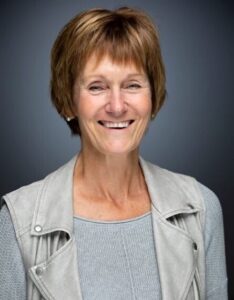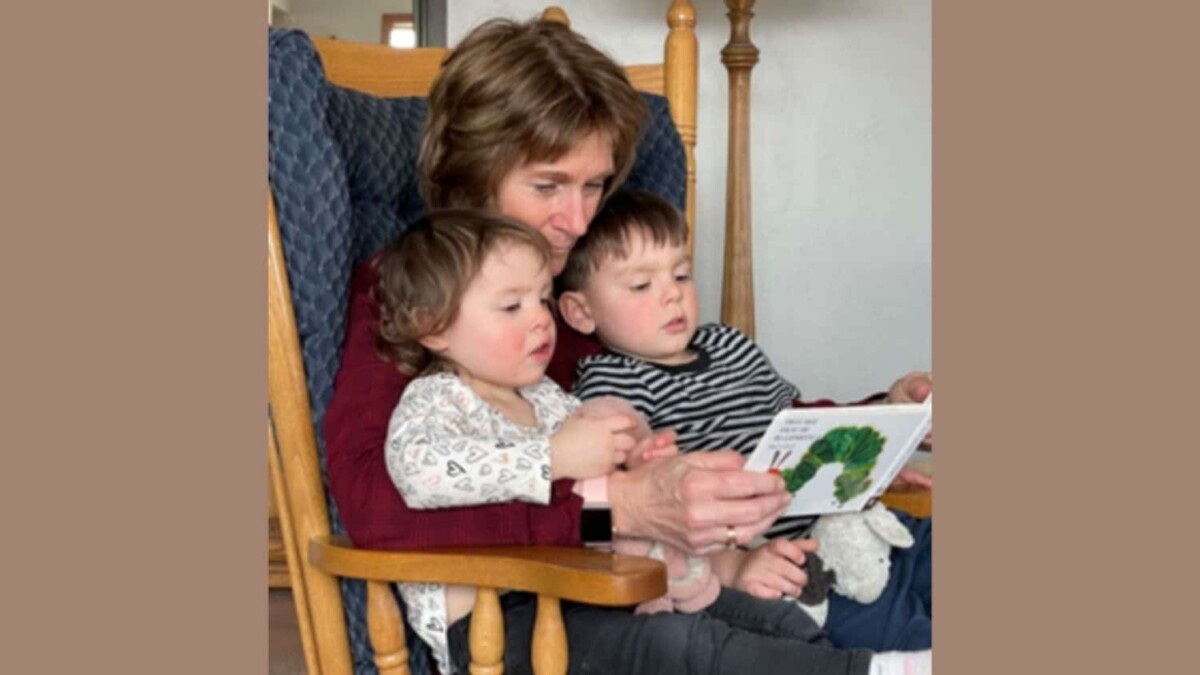What better time than the holidays, when hopefully we are seeing our grandchildren even more, to continue our focus on maximizing our playtime with the young ones. How about a fun time together AND nurturing better brain development? To that end, I continue sharing expert advice from Dr. Jill VandeHey Klefstad in part 2 of Grandma School.
Dr. Jill began teaching kindergarten in the 1980s but then took time off from teaching to raise four children. During that time, she earned a master’s degree which allowed her to teach courses at the University of Wisconsin-Stout and supervise student teachers in K-3 classrooms. Simultaneously, she completed a doctoral program that led her to be part of the early childhood education faculty at UW-Stout until retirement in 2021.
Dr. Jill shared with me that while she loved being a mom to her four children, the demands of a full-time job affected her parenting. She ran out of time to do all the things she could have/should have done to enhance their whole development. How many of us can relate to that!?!
It wasn’t until she held her first grandchild that she realized she was being given another chance to do ‘all those things’ she had dreamed of doing with her own children. Now retired, she finds it to be a true gift to host Grandma School for her three granddarlings. “It is a privilege and a joy,” she glowed.
The role of the grandparent varies for each one of us. But as Dr. Jill shares, it is a gift to be able to ‘teach’ our granddarlings about life. The focus of her Grandma School is not to make them smarter but to provide many of the things that children need to be kind, happy, and mentally healthy. Unfortunately, the curriculum in the schools is continually being ‘pushed’ down on our children with a focus more on test scores than development.
What We Learned in Kindergarten
Think back to what you learned in kindergarten. The focus was on social and emotional skills and on gross and fine motor things like how to tie your shoes and write your name. Sadly, the focus, even in some 4K classrooms, is on test scores.
What we are missing with such a focus is meeting the fundamental needs of little children. That is the “why” behind the idea sheet in each of these blogs, to provide developmentally appropriate ideas for children ages 2-5.
Meeting Their Fundamental Needs
Idea #1
What?
See Jill’s one-page idea sheet for a variety of December activities.
Why?
Christmas is about giving. What better gift to give your granddarlings than the gift of your time? Take a moment to look over the activities sheet and perhaps choose one activity that brings back a memory for you. Grandchildren love to hear stories about when you were little.
Idea #2
What?
Make reindeer snacks.
Why?
Having children make their snacks, which helps them practice and learn basic math concepts (spatial awareness, counting out the number of pretzel sticks, raspberries, etc.), also increases their vocabulary and knowledge. Did you know that both male and female reindeer have antlers and that reindeer do not fly but they are good swimmers? Check out more Reindeer Facts to share with them.
Idea #3
What?
Sort and group bells by size and color.
Why?
Children love to see and hear bells. It helps them to ‘hear’ the sound of Christmas. The bells can be sorted by colors, sizes, and sounds. Include some pipe cleaners and bells to string together to create various shakers and patterns.
Idea #4
What?
Decorate trees with loose parts.
Children are in awe of your Christmas tree. Allow them to decorate their tree with a variety of materials aka loose parts. You can create trees out of popsicle sticks, felt, contact paper, toilet paper rolls, or playdough.
Include ‘loose parts’ to decorate the tree including buttons, pom poms, pine needles, sequins, etc. Displaying your granddarlings’ Christmas trees will give them a sense of pride. In years to come, they will look for their tree at your house.
One Last Word About Loose Part Play
Loose parts can be defined as materials that are tangible and can be carried, moved around, taken apart, combined with other materials, and put back together in several ways. When children engage in loose parts play, which is open-ended, they are the director of the play.
This develops their creativity and deepens their critical thinking because there are no specifics given as to how to use the materials. Nature remains the richest source of loose parts but here is a list of other materials to consider having available for your grandchildren.
Watch for Part 3, the final blog of this series, with Dr. Jill as she continues to share the What and the Why for you to use with your own granddarlings.
Let’s Have a Conversation:
What holiday activities have you enjoyed with your grandchildren? What reactions have they had to your time together? What other feedback would you have for Dr. Jill? Let’s have a conversation!
Marie Burns is a Certified Financial Planner, Speaker, and Author of the bestselling Financial Checklist books. Find Marie on Facebook or contact her at [email protected]
This article was first published at 60 and Me – a community that helps women over 60 live happy, healthy and financially secure lives.
 Dr. Jill’s Professional and Personal Expertise
Dr. Jill’s Professional and Personal Expertise
